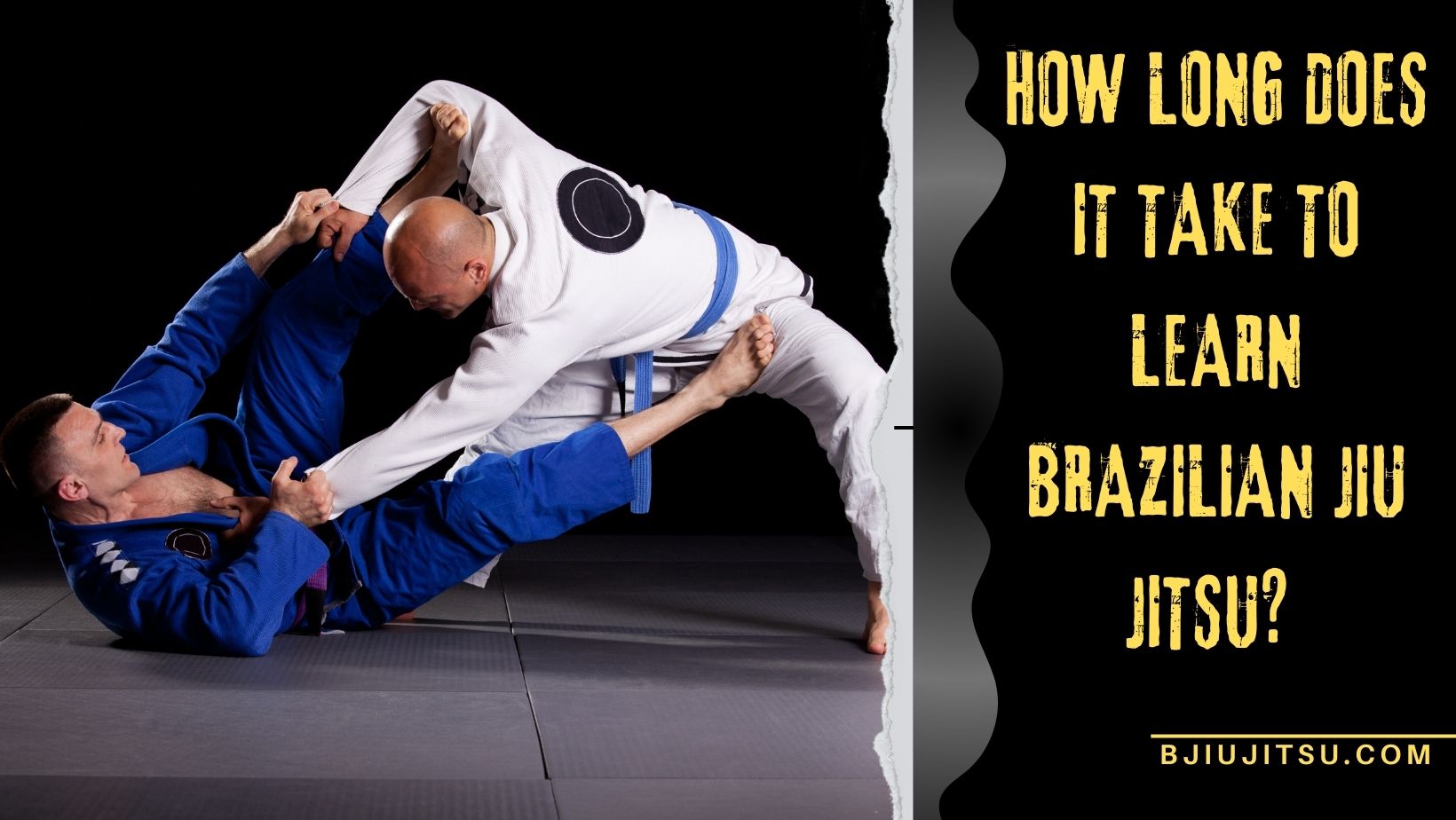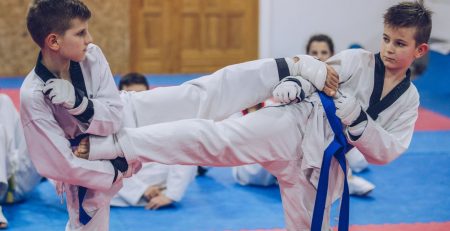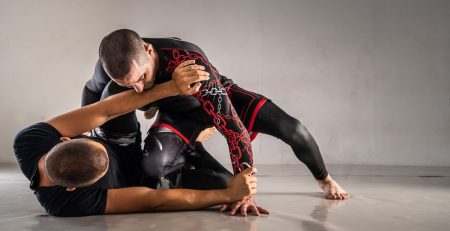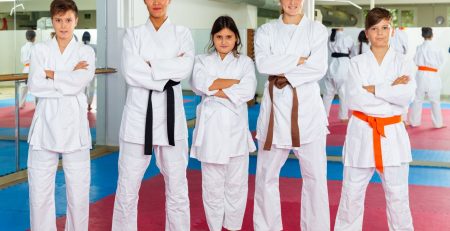How Long Does It Take to Learn Brazilian Jiu-Jitsu – A Comprehensive Guide
Table of Contents:
- Introduction
- Understanding Brazilian Jiu-Jitsu
- Factors Affecting Learning Time
- Individual Learning Style
- Training Frequency and Consistency
- Starting Age and Physical Fitness
- The Journey Through Belt Ranks
- White Belt
- Blue Belt
- Purple Belt
- Brown Belt
- Black Belt
- Tips for Accelerated Learning
- Consistency is Key
- Set Realistic Goals
- Seek Quality Instruction
- Train Smart, Not Just Hard
- Supplement with Additional Learning Resources
- Conclusion
Introduction
Brazilian Jiu-Jitsu (BJJ) is a martial art that has gained widespread popularity for its effectiveness in self-defense and combat sports. However, many beginners often wonder: How long does it take to learn Brazilian Jiu-Jitsu? In this comprehensive guide, we will explore the factors that influence the learning process, the journey through belt ranks, and provide valuable tips for accelerating your progress in BJJ.
Understanding Brazilian Jiu-Jitsu
Before delving into the timeline for learning BJJ, it’s essential to understand the nature of this martial art. BJJ focuses on ground fighting and submission techniques, emphasizing leverage and technique over size and strength. Unlike other martial arts, BJJ does not rely on striking but instead involves grappling and positional dominance to control opponents.
Factors Affecting Learning Time
Several factors can influence how long it takes an individual to learn Brazilian Jiu-Jitsu effectively. These include:
- Individual Learning Style: Everyone learns differently, and some may grasp techniques quicker than others. Understanding your learning style can help tailor your training approach.
- Training Frequency and Consistency: Regular and consistent training is crucial for progress in BJJ. Training multiple times per week allows for skill retention and gradual improvement over time.
- Starting Age and Physical Fitness: Starting BJJ at a younger age and maintaining good physical fitness can contribute to faster learning and skill development.
The Journey Through Belt Ranks
Progression in BJJ is typically marked by belt ranks, each representing a different level of skill and experience. The journey through belt ranks includes:
- White Belt: The starting point for all BJJ practitioners, where the focus is on learning fundamental techniques and positions.
- Blue Belt: Progression to the blue belt signifies a deeper understanding of BJJ fundamentals and the ability to apply techniques in live sparring.
- Purple Belt: At the purple belt level, practitioners demonstrate proficiency in advanced techniques and begin to develop their unique grappling style.
- Brown Belt: Brown belts are highly skilled practitioners who have refined their techniques and are capable of teaching and mentoring lower-ranked students.
- Black Belt: The black belt is the highest rank in BJJ, symbolizing mastery of the art and a commitment to lifelong learning and improvement.
Tips for Accelerated Learning
While the journey to mastering Brazilian Jiu-Jitsu may be long, there are several tips for accelerating your learning process:
- Consistency is Key: Make a commitment to regular training and stick to a consistent schedule to maximize progress.
- Set Realistic Goals: Set achievable short-term and long-term goals to track your progress and stay motivated.
- Seek Quality Instruction: Choose a reputable BJJ academy with experienced instructors who can provide personalized guidance and feedback.
- Train Smart, Not Just Hard: Focus on technique and leverage rather than relying solely on strength and athleticism.
- Supplement with Additional Learning Resources: Take advantage of instructional videos, seminars, and private lessons to supplement your training and gain new insights into BJJ techniques.
Conclusion
In conclusion, learning Brazilian Jiu-Jitsu is a journey that requires dedication, patience, and a willingness to learn. While the timeline for mastering BJJ may vary for each individual, consistent training, quality instruction, and smart training strategies can accelerate your progress and help you achieve your goals in the art of Brazilian Jiu-Jitsu.
FAQs Related to Learning Brazilian Jiu-Jitsu
How long does it take to learn Brazilian Jiu-Jitsu?
The time it takes to learn Brazilian Jiu-Jitsu varies depending on factors such as individual learning style, training frequency, starting age, and physical fitness. While some may progress more quickly, it generally takes several years of consistent training to achieve proficiency in BJJ.
Is Brazilian Jiu-Jitsu suitable for beginners?
Yes, Brazilian Jiu-Jitsu is suitable for beginners of all ages and fitness levels. Most BJJ academies offer beginner-friendly classes where new students can learn fundamental techniques and gradually progress through the ranks.
Do I need to be physically fit to start learning BJJ?
While being physically fit can be beneficial, it is not a requirement to start learning Brazilian Jiu-Jitsu. BJJ emphasizes technique and leverage over size and strength, making it accessible to individuals of all shapes and sizes.
How often should I train to progress in Brazilian Jiu-Jitsu?
Consistency is key to progress in Brazilian Jiu-Jitsu. Training multiple times per week, ideally three to four sessions, allows for skill retention and gradual improvement over time. However, the frequency of training can vary depending on individual schedules and commitments.
What should I expect in my first BJJ class?
In your first Brazilian Jiu-Jitsu class, you can expect to learn basic techniques such as positional control, escapes, and submissions. You will also participate in drills and possibly live sparring (rolling) under the guidance of experienced instructors.
How do I choose the right BJJ academy for me?
When choosing a BJJ academy, consider factors such as the reputation of the instructors, the atmosphere of the gym, class schedules, and location. It’s essential to visit different academies, try out trial classes, and ask questions to determine which academy best fits your goals and preferences.
Can I learn Brazilian Jiu-Jitsu through online resources?
While online resources such as instructional videos and tutorials can supplement your training, they should not replace hands-on instruction and practice in a BJJ academy. Online resources can be helpful for reviewing techniques and gaining additional insights but should be used in conjunction with regular training sessions.
What are the different belt levels in Brazilian Jiu-Jitsu?
In Brazilian Jiu-Jitsu, practitioners progress through various belt levels as they gain experience and knowledge. The belt hierarchy typically consists of white, blue, purple, brown, and black belts, with each belt representing a different level of proficiency and understanding of the art.
How can I accelerate my progress in Brazilian Jiu-Jitsu?
To accelerate progress in Brazilian Jiu-Jitsu, it’s essential to prioritize consistency, focus on fundamental techniques, seek guidance from experienced instructors, and actively participate in sparring sessions. Additionally, maintaining a healthy lifestyle and mindset can contribute to overall improvement on the mats.
Is Brazilian Jiu-Jitsu suitable for self-defense?
Yes, Brazilian Jiu-Jitsu is highly effective for self-defense purposes due to its emphasis on leverage, technique, and control. BJJ techniques enable practitioners to defend themselves against larger and stronger opponents by utilizing grappling and submission techniques to neutralize threats and control situations.
Can I compete in Brazilian Jiu-Jitsu tournaments as a beginner?
Yes, many Brazilian Jiu-Jitsu tournaments offer divisions specifically for beginners and novice practitioners. Competing in tournaments can be a valuable experience for beginners to test their skills, gain confidence, and measure their progress against other practitioners of similar skill levels.
Are there any age restrictions for learning Brazilian Jiu-Jitsu?
No, there are no age restrictions for learning Brazilian Jiu-Jitsu. BJJ can be practiced by individuals of all ages, from children to seniors. Many BJJ academies offer classes tailored to different age groups, ensuring that practitioners receive appropriate instruction and training based on their age and skill level.
How can I prevent injuries while training Brazilian Jiu-Jitsu?
To prevent injuries while training Brazilian Jiu-Jitsu, it’s essential to warm up properly before each class, practice proper technique, listen to your body, and communicate with training partners about any pre-existing injuries or discomfort. Additionally, incorporating strength and conditioning exercises into your training regimen can help build resilience and reduce the risk of injury.
Can women learn Brazilian Jiu-Jitsu?
Absolutely! Brazilian Jiu-Jitsu is for everyone, regardless of gender. Many BJJ academies offer women’s only classes or provide a welcoming and inclusive environment for female practitioners to learn and train alongside their male counterparts.













Leave a Reply
You must be logged in to post a comment.